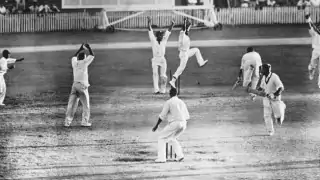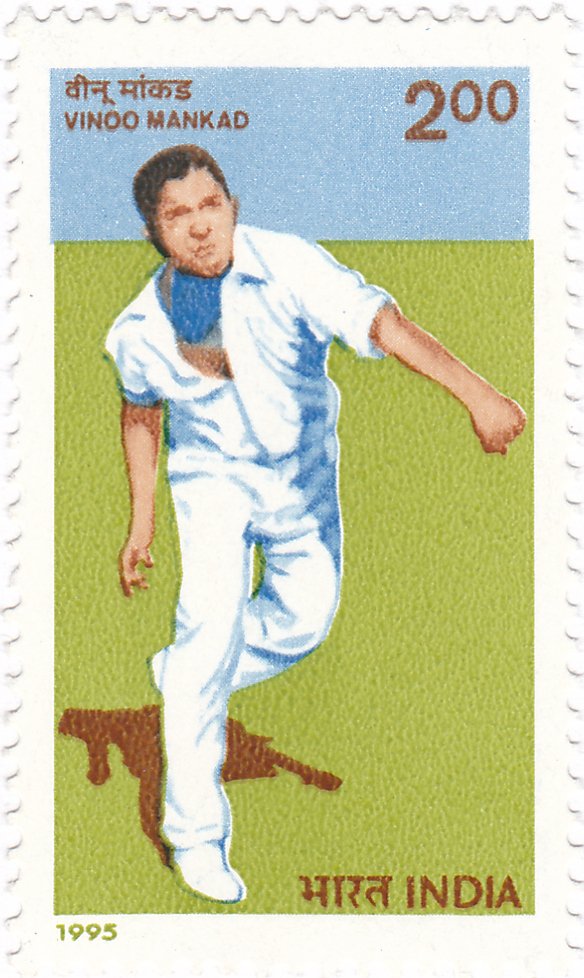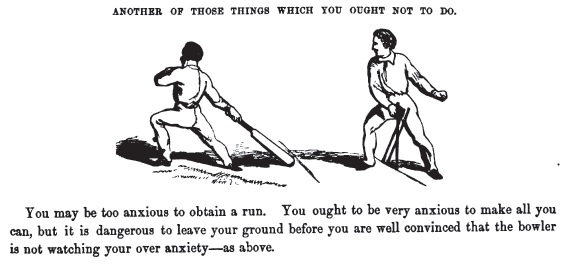
I know this is subjective, but there is little doubt in my mind that the first tied Test match, at Brisbane, was the greatest in history.
Today is the 60th anniversary of the final day of that Test.
Here is how the drama unfolded as the day went on.
But first, some context.
+
Today is the 60th anniversary of the final day of that Test.
Here is how the drama unfolded as the day went on.
But first, some context.
+

Not only the greatest, this was one of the most significant Test matches.
West Indies had their first full-time black captain, in Worrell.
The history of racism in the islands, the ridiculous injustice of it all, demands a separate thread.
I shall leave that for another day.
+
West Indies had their first full-time black captain, in Worrell.
The history of racism in the islands, the ridiculous injustice of it all, demands a separate thread.
I shall leave that for another day.
+
There is more.
Until this point, only Test matches involving England used to receive serious coverage.
That would change here. That demands another thread too.
Now for the cricket.
After four days, the score read West Indies 453 and 259/9, Australia 505.
207 ahead.
+
Until this point, only Test matches involving England used to receive serious coverage.
That would change here. That demands another thread too.
Now for the cricket.
After four days, the score read West Indies 453 and 259/9, Australia 505.
207 ahead.
+
The match highlights included Sobers' 132; a composed 181 from O'Neill; Hall's 50, then 4/140; and Davidson's 44 and 10 wickets.
Sobers' performance deserves a mention.
A local newspaper had commented on the morning of the first day that Benaud had the measure of Sobers.
+
Sobers' performance deserves a mention.
A local newspaper had commented on the morning of the first day that Benaud had the measure of Sobers.
+
Sobers must have read it.
So exhilarating were Sobers' strokes that Benaud thought the spectators should pay surcharge on their tickets as privilege for watching it.
Let us turn to that dramatic final day.
Two things happened that morning that seemed innocuous at that point.
+
So exhilarating were Sobers' strokes that Benaud thought the spectators should pay surcharge on their tickets as privilege for watching it.
Let us turn to that dramatic final day.
Two things happened that morning that seemed innocuous at that point.
+
First, Benaud spotted white clover flowers on the outfield.
The curator told him that there had been a shower just after 7.30 that day. There was no time to mow the grass.
The other incident involved Ron Lovitt, The Age's photographer for the day.
+
The curator told him that there had been a shower just after 7.30 that day. There was no time to mow the grass.
The other incident involved Ron Lovitt, The Age's photographer for the day.
+
Before the day's play, Lovitt clicked a photograph of the governor of Queensland for a feature.
We shall return these later.
On field, West Indies added another 25 that morning.
Davidson finished with 11 wickets to go with that first-innings 44.
But his role was not over.
+
We shall return these later.
On field, West Indies added another 25 that morning.
Davidson finished with 11 wickets to go with that first-innings 44.
But his role was not over.
+
Australia needed 233 in 310 minutes.
Hall bounced Simpson early on.
Simpson tried to duck, was caught in two minds, and fended to short leg. 1/1.
Then Hall had Harvey brilliantly caught by Sobers at slip. Sobers injured his finger in the process but stayed on. 7/2.
+
Hall bounced Simpson early on.
Simpson tried to duck, was caught in two minds, and fended to short leg. 1/1.
Then Hall had Harvey brilliantly caught by Sobers at slip. Sobers injured his finger in the process but stayed on. 7/2.
+
McDonald and O'Neill took the score to 28/2 at lunch.
During the break, Benaud had a word with them.
All three agreed that they needed to up the tempo.
The idea of a draw never came up.
O'Neill went after Hall immediately after lunch, taking three fours and a three.
+
During the break, Benaud had a word with them.
All three agreed that they needed to up the tempo.
The idea of a draw never came up.
O'Neill went after Hall immediately after lunch, taking three fours and a three.
+
The he tried to cut Hall and was caught behind. 49/3.
Worrell bowled McDonald next over. 49/4.
Hall bowled short again. The ball took Favell's glove and went to short leg. 57/5.
And Mackay was bowled when he tried to play Ramadhin across the line. 92/6.
Another 141.
+
Worrell bowled McDonald next over. 49/4.
Hall bowled short again. The ball took Favell's glove and went to short leg. 57/5.
And Mackay was bowled when he tried to play Ramadhin across the line. 92/6.
Another 141.
+
West Indies' match to lose.
Davidson and Benaud hung on, taking Australia to 109/6 at tea.
They needed 124 in the final session.
Bradman came over to the dressing-room at tea to have a word with Benaud.
+
Davidson and Benaud hung on, taking Australia to 109/6 at tea.
They needed 124 in the final session.
Bradman came over to the dressing-room at tea to have a word with Benaud.
+
- What are you going for, Richie? A win or a draw?
- We're going for a win, of course.
- I'm very pleased to hear it.
Bradman would have done the same.
Headingley 1948, for example.
The greatest teams have always played to win. That is a basic criterion for greatness.
+
- We're going for a win, of course.
- I'm very pleased to hear it.
Bradman would have done the same.
Headingley 1948, for example.
The greatest teams have always played to win. That is a basic criterion for greatness.
+
The first two overs fetched six singles. Then they took a four each off Valentine's over.
The fifty-run stand came at a run a minute.
Worrell saved Hall for the second new ball – but the others made little impact.
Australia reached 172/6 at drinks. Another 61.
+
The fifty-run stand came at a run a minute.
Worrell saved Hall for the second new ball – but the others made little impact.
Australia reached 172/6 at drinks. Another 61.
+
The match had swung back – but not completely.
And they were 206/6 when Worrell tossed the new ball to Hall.
And yet nothing happened. Davidson and Benaud carried on.
Australia needed 9 in 10 minutes.
There would be, in all likelihood, two eight-ball overs.
+
And they were 206/6 when Worrell tossed the new ball to Hall.
And yet nothing happened. Davidson and Benaud carried on.
Australia needed 9 in 10 minutes.
There would be, in all likelihood, two eight-ball overs.
+
Benaud ran a single off the second ball. Davidson returned the strike.
Seven more.
And then Benaud pushed one between mid wicket and square leg.
"Yes", he yelled, and set off: surely Solomon could not pick up and throw from that angle before Davidson would made it?
+
Seven more.
And then Benaud pushed one between mid wicket and square leg.
"Yes", he yelled, and set off: surely Solomon could not pick up and throw from that angle before Davidson would made it?
+
But Solomon did, and the West Indians finally celebrated.
Davidson had added 80 to his already impressive match numbers.
He had become the first cricketer to score a hundred runs and take ten wickets in a Test match.
Grout's gloves slipped from his hands as he walked out.
+
Davidson had added 80 to his already impressive match numbers.
He had become the first cricketer to score a hundred runs and take ten wickets in a Test match.
Grout's gloves slipped from his hands as he walked out.
+
He was visibly nervous.
He played out two balls before getting off the mark.
But Benaud could not retain the strike.
There was time for one eight-ball over.
Australia needed another six.
While all this was going on, Kline, scheduled to bat last, had asked McDonald:
+
He played out two balls before getting off the mark.
But Benaud could not retain the strike.
There was time for one eight-ball over.
Australia needed another six.
While all this was going on, Kline, scheduled to bat last, had asked McDonald:
+
"I won't have to go in, will I?"
It was unlikely, McDonald had said.
If only he knew.
The shadows were lengthening. Hall marked his long run-up.
But another drama had been unfolding in The Gabba.
Remember Lovitt? At this point he realised he had only one plate left.
+
It was unlikely, McDonald had said.
If only he knew.
The shadows were lengthening. Hall marked his long run-up.
But another drama had been unfolding in The Gabba.
Remember Lovitt? At this point he realised he had only one plate left.
+
If only he had not clicked the governor!
Lovitt somehow had to figure out which of the eight balls would be the last.
They needed six, and it was unlikely that they would go for it right away.
He waited.
The first ball hit Grout on the solar plexus, then fell at his feet.
+
Lovitt somehow had to figure out which of the eight balls would be the last.
They needed six, and it was unlikely that they would go for it right away.
He waited.
The first ball hit Grout on the solar plexus, then fell at his feet.
+
Amidst all this, Benaud sprinted as if his life depended on it.
He had not called, but Grout saw him running, and responded despite his agony.
5 from 7. What was more, Benaud had strike.
But something else happened as well, according to umpire Col Hoy.
+
He had not called, but Grout saw him running, and responded despite his agony.
5 from 7. What was more, Benaud had strike.
But something else happened as well, according to umpire Col Hoy.
+
For some reason, the people who maintained the scoreboard at The Gabba missed that run.
So everyone at the ground were under the impression that they needed 6 from 7.
Worrell had instructed Hall against a bouncer.
But Hall had been fuming after that leg-bye.
+
So everyone at the ground were under the impression that they needed 6 from 7.
Worrell had instructed Hall against a bouncer.
But Hall had been fuming after that leg-bye.
+
He bounced, and this was came quicker than Benaud expected.
Benaud tried to hook. The edge went to the big gloves of Alexander.
5 from 6. Two wickets. Meckiff was next man in.
The next ball, a defensive push, was the only eventless ball of the over. 5 from 5.
+
Benaud tried to hook. The edge went to the big gloves of Alexander.
5 from 6. Two wickets. Meckiff was next man in.
The next ball, a defensive push, was the only eventless ball of the over. 5 from 5.
+
Now Meckiff played and missed, and Grout set off for a bye.
Alexander threw and missed.
Hall collected it mid-pitch and threw it at the non-striker's end.
He missed as well.
The throw was wayward, but Valentine prevented any overthrow. 4 from 4.
And Grout was on strike.
+
Alexander threw and missed.
Hall collected it mid-pitch and threw it at the non-striker's end.
He missed as well.
The throw was wayward, but Valentine prevented any overthrow. 4 from 4.
And Grout was on strike.
+
Hall could not be a happy man, Grout figured out. Another bouncer? He played the hook well...
But it was not a bouncer!
Grout mistimed completely. The ball went up almost vertically.
Kanhai waited for the catch at square leg.
Another wicket... surely?
+
But it was not a bouncer!
Grout mistimed completely. The ball went up almost vertically.
Kanhai waited for the catch at square leg.
Another wicket... surely?
+
For some reason Hall had decided to go for it. They yelled to stop him, but to no avail.
It was a long distance, but despite an entire day's bowling, Hall ran really, really fast. "How Wes ever got there I will never know," exclaimed Worrell.
No physical damage was done.
+
It was a long distance, but despite an entire day's bowling, Hall ran really, really fast. "How Wes ever got there I will never know," exclaimed Worrell.
No physical damage was done.
+
But the catch was grassed.
And a dejected Hall realised that they had also run a single. 3 from 3.
Now Meckiff gave an almighty heave, and the ball ran towards square leg.
The batsmen ran one, two... but did they need to? It was racing towards the boundary anyway.
+
And a dejected Hall realised that they had also run a single. 3 from 3.
Now Meckiff gave an almighty heave, and the ball ran towards square leg.
The batsmen ran one, two... but did they need to? It was racing towards the boundary anyway.
+
Remember the uncut clovers and the unmown grass?
They slowed the pace of the ball.
Alexander had positioned himself well, but even then Hunte's throw had to be quick and accurate.
He swooped down on the ball, picked it up, and threw it flat – and straight into the gloves.
+
They slowed the pace of the ball.
Alexander had positioned himself well, but even then Hunte's throw had to be quick and accurate.
He swooped down on the ball, picked it up, and threw it flat – and straight into the gloves.
+
All in one go, in a ridiculously short span of time.
Grout's dive fell a foot short.
The scores were level, but Australia had a wicket in hand.
Kline's worst fears had come true. He was now needed in the middle.
+
Grout's dive fell a foot short.
The scores were level, but Australia had a wicket in hand.
Kline's worst fears had come true. He was now needed in the middle.
+
He had been frantically looking for his gloves before walking out.
He had not realised that he had been sitting on them.
Now Worrell walked up to his spearhead: "Remember, Wes, if you bowl a no-ball, you will never be able to go back to Barbados".
+
He had not realised that he had been sitting on them.
Now Worrell walked up to his spearhead: "Remember, Wes, if you bowl a no-ball, you will never be able to go back to Barbados".
+
Meanwhile, Lovitt had decided that this was it.
But what to click? What if the action happened away from where he would focus?
He turned to Harry Martin of The Herald.
Martin had also run out of films – almost.
Both men were down to their last films.
+
But what to click? What if the action happened away from where he would focus?
He turned to Harry Martin of The Herald.
Martin had also run out of films – almost.
Both men were down to their last films.
+
They were from rival newspapers, but that did not matter anymore. They had to collaborate.
They decided to toss a coin. Martin calls tails.
He would follow the ball. Lovitt would focus on the pitch.
The picture you see was clicked by Lovitt.
+
They decided to toss a coin. Martin calls tails.
He would follow the ball. Lovitt would focus on the pitch.
The picture you see was clicked by Lovitt.
+
Hall steamed in. He did not overstep. Worrell's words had an impact, he later admitted.
The left-handed Kline played the ball to square-leg and set off.
By then Meckiff was already sprinting down the pitch.
+
The left-handed Kline played the ball to square-leg and set off.
By then Meckiff was already sprinting down the pitch.
+
Lashley ran in from mid-wicket before realising that it was Solomon's throw to make.
Worrell had meanwhile run to the non-striker's end to cover the throw; Sobers and Kanhai, to the striker's end.
+
Worrell had meanwhile run to the non-striker's end to cover the throw; Sobers and Kanhai, to the striker's end.
+
But none of that was needed, for Solomon – despite having only one stump to wait at, despite the tremendous pressure – managed to hit directly.
They appealed to umpire Hoy, stationed not at square leg but point.
Out.
+
They appealed to umpire Hoy, stationed not at square leg but point.
Out.
+
The West Indians were jubilant, for they thought they had won (the scorecard had missed a run, remember?).
Even the radio announced a West Indian win.
Only some time later did the truth surface.
Meanwhile, Lovitt clicked the most iconic photograph in the history of cricket.
+
Even the radio announced a West Indian win.
Only some time later did the truth surface.
Meanwhile, Lovitt clicked the most iconic photograph in the history of cricket.
+
And the greatest Test series in history was set into motion.
*
A couple of things.
First, I talked about this photograph (along with a few others) in a podcast hosted by @RandomCricketP1.
Here is the URL.
Warning: I speak worse than I write.
+
*
A couple of things.
First, I talked about this photograph (along with a few others) in a podcast hosted by @RandomCricketP1.
Here is the URL.
Warning: I speak worse than I write.
+
• • •
Missing some Tweet in this thread? You can try to
force a refresh









